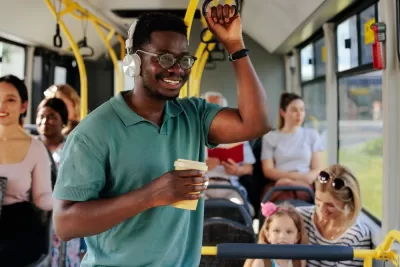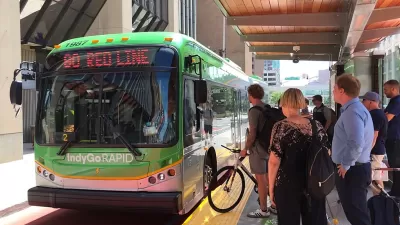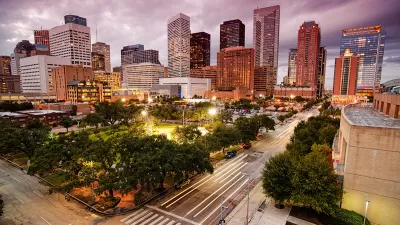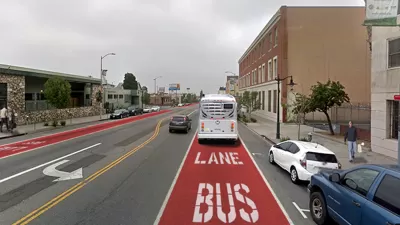The solution to making public transit better doesn’t lie in technological innovations or hyper-modern trains, but in investing in one of its simplest tools.

Writing in The Conversation, Nicholas Dagen Bloom sings the praises of the city bus. Unlike more high-tech transit solutions, Dagen Bloom argues that buses are, in fact, “the future of public transit.” Unlike autonomous vehicles or costly tunnels, buses offer an immediate, affordable, and effective way to improve transit access and serve more riders.
While global cities invested heavily in buses in the early part of the 20th century, the United States took a different path, investing instead in the sprawling national highway system as more Americans gained access to car ownership. “Between 1945 and 1960, U.S. transit companies and agencies typically lost half or more of their riders as white Americans moved to urban fringes or suburbs and became car commuters.”
For Dagen Bloom, “buses are the most likely option for substantially expanding public transit ridership in the U.S. Millions of Americans need affordable public mobility for work, study, recreation and shopping,” pointing to the high cost of car ownership, which can be a significant burden on low-income households. Dagen Bloom highlights examples of U.S. cities that have made improvements to their bus systems in recent decades including Indianapolis, where a fairly extensive bus rapid transit system is taking shape. Dagen Bloom believes buses can be affordable and effective, but only if governments recognize their value and invest in their bus systems.
FULL STORY: Why the humble city bus is the key to improving US public transit

Planetizen Federal Action Tracker
A weekly monitor of how Trump’s orders and actions are impacting planners and planning in America.

Congressman Proposes Bill to Rename DC Metro “Trump Train”
The Make Autorail Great Again Act would withhold federal funding to the system until the Washington Metropolitan Area Transit Authority (WMATA), rebrands as the Washington Metropolitan Authority for Greater Access (WMAGA).

The Simple Legislative Tool Transforming Vacant Downtowns
In California, Michigan and Georgia, an easy win is bringing dollars — and delight — back to city centers.

The States Losing Rural Delivery Rooms at an Alarming Pace
In some states, as few as 9% of rural hospitals still deliver babies. As a result, rising pre-term births, no adequate pre-term care and "harrowing" close calls are a growing reality.

The Small South Asian Republic Going all in on EVs
Thanks to one simple policy change less than five years ago, 65% of new cars in this Himalayan country are now electric.

DC Backpedals on Bike Lane Protection, Swaps Barriers for Paint
Citing aesthetic concerns, the city is removing the concrete barriers and flexposts that once separated Arizona Avenue cyclists from motor vehicles.
Urban Design for Planners 1: Software Tools
This six-course series explores essential urban design concepts using open source software and equips planners with the tools they need to participate fully in the urban design process.
Planning for Universal Design
Learn the tools for implementing Universal Design in planning regulations.
Smith Gee Studio
City of Charlotte
City of Camden Redevelopment Agency
City of Astoria
Transportation Research & Education Center (TREC) at Portland State University
US High Speed Rail Association
City of Camden Redevelopment Agency
Municipality of Princeton (NJ)





























